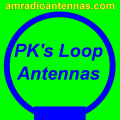n6gn
About
- Username
- n6gn
- Joined
- Visits
- 4,514
- Last Active
- Roles
- Member
- Points
- 18
-
Rounded Frequency Set
-
Kiwi phase/frequency stability & Ebnaut decoding
@HB9TMC
I haven't documented the kiwiSDR onboard GPS performance but I have examined it, particularly in comparison to use of the Kiwi with an external clock. You can do the same by comparing two of my kiwis, one with a Bodnar GPSDO which generally appears to be better than 1 ppb and to not limit the phase noise performance of the kiwi with another using the on-board GPS reference.
Bodnar referenced Kiwi
and
on-board kiwi GPS
are both looking at US NIST LOS/"groundwave" signals transmitted from less than 20 km distant.
This may not be entirely satisfactory since the on-board kiwi's GPS antenna is outdoors but not very well located. -
Suggestion, a change to the auto scaling in waterfall, to add 5 to the min result
-
W/F and SND Bad Params
In a kiwi itself rather than my router, after trying it with FORWARD, I ran:
iptables -I INPUT -s 47.88.219.24/24 -j DROP
iptables -I INPUT -s 184.22.160.13/24 -j DROP
since I'm trying to stop packets from two different offenders at the kiwi rather than from being forwarded by the router. This I followed with:
iptables-save
so that it will (I hope) get restored upon reboot. Examining the results I get:
root@kiwisdr:~# iptables -L
Chain INPUT (policy ACCEPT)
target prot opt source destination
DROP all -- 184-22-160-0.24.nat.tls1a-cgn02.myaisfibre.com/24 anywhere
DROP all -- 47.88.219.0/24 anywhere
Chain FORWARD (policy ACCEPT)
target prot opt source destination
DROP all -- 184-22-160-0.24.nat.tls1a-cgn02.myaisfibre.com/24 anywhere
DROP all -- 47.88.219.0/24 anywhere
Chain OUTPUT (policy ACCEPT)
target prot opt source destination
I'm not familiar enough with iptables yet to know if this will be sufficient, perhaps only the INPUT rule is needed. Maybe someone who knows can suggest whether this is correct or whether there's a better way. -
Combining/Diplexing Antennas to Single Kiwi
W1EUJ,
I have been working on exactly this for some time. I started with a variety of broadband approaches several years ago. A prototype was published by W6SFH in QST a couple of years ago. I've visited both short dipoles and loops as well as various FET/BJT approaches such as several iterations on the Trask design.
My target has been to get to or very close to the "quiet rural" ITU noise floor with an antenna (system) that can cover the range of the kiwi. It turns out that with small antennas the limiting point is the same as that of the kiwi - upper HF. Although 'radiation resistance' and the associated signal&noise levels are dropping with increasing wavelength, the noise floor at these long wavelengths is rising faster so that allows a very small antenna to work well from LF-midHF. The problem is that to get to the ITU limit above ~14 MHz (or so) one needs to get rather close to KTB. This is not presently possible with available devices. For a dipole, the device that can provide the input Z (low capacity, high R) to avoid mismatch loss can not simultaneously handle the broadband onslaught of highlevel signals and very low noise floor. I have been able to achieve this with an OpAmp design but only VLF up to midHF.
Lately I've been working on a hybrid passive/active approach just as you suggest. But to make this system work with a passive over an [octave] requires some complexity. The Q of a single dipole (around 7) is too high to avoid mismatch loss (see paper by Fano) that raises the effective noise floor. But there are techniques that can do this. For example, a biconical or modified-biconical can be built from wire and give only ~2 dB mismatch loss from 14-30 MHz (and above). It also appears to be possible to couple an active dipole with a passive one to get partial-hybrid, though not over an octave. With a suitable diplexer at, say, 12 MHz, one can combine the best of the active antenna performance with that of the passive and get to a suitably low noise floor.
Presently I'm trying to understand the effects of ground/earth proximity and polarization better. I have kiwis outfitted with both active antennas and multiple V/H passive dipoles (with LNA) available should you like to investigate. The active dipoles are on N6GN/K3 and N6GN/K2 (a remote site) while orthogonal 21 MHz dipoles are at N6GN/K. All three have antenna switches so you can play around, though be cautioned that I'm always messing with things so there's no guarantee what you'll find. I try to keep the Antenna labels current but don't always succeed.
Write me if interested in any particular part of this.
Glenn n6gn




